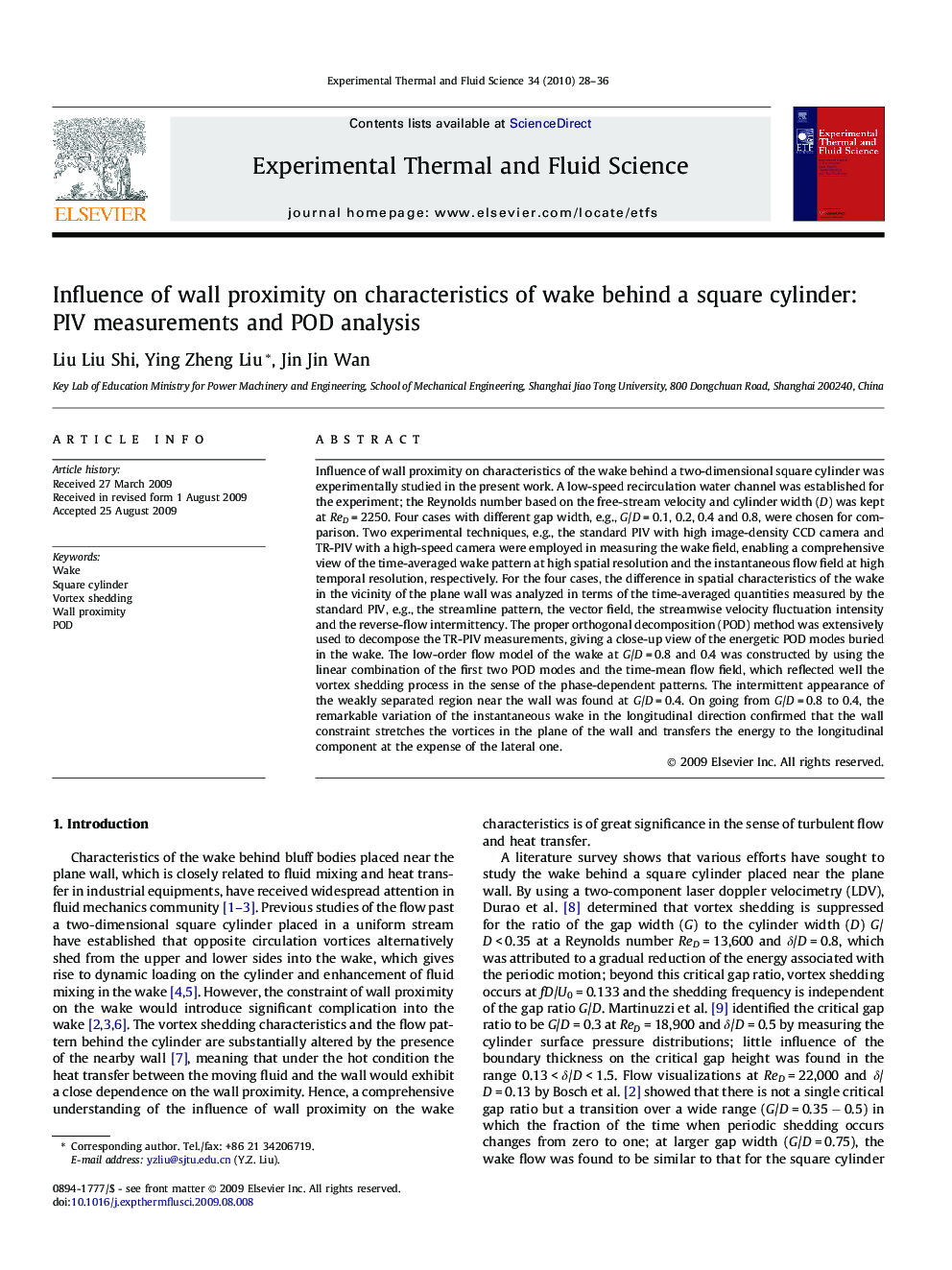| کد مقاله | کد نشریه | سال انتشار | مقاله انگلیسی | نسخه تمام متن |
|---|---|---|---|---|
| 652201 | 885008 | 2010 | 9 صفحه PDF | دانلود رایگان |
عنوان انگلیسی مقاله ISI
Influence of wall proximity on characteristics of wake behind a square cylinder: PIV measurements and POD analysis
دانلود مقاله + سفارش ترجمه
دانلود مقاله ISI انگلیسی
رایگان برای ایرانیان
کلمات کلیدی
موضوعات مرتبط
مهندسی و علوم پایه
مهندسی شیمی
جریان سیال و فرایندهای انتقال
پیش نمایش صفحه اول مقاله

چکیده انگلیسی
Influence of wall proximity on characteristics of the wake behind a two-dimensional square cylinder was experimentally studied in the present work. A low-speed recirculation water channel was established for the experiment; the Reynolds number based on the free-stream velocity and cylinder width (D) was kept at ReDÂ =Â 2250. Four cases with different gap width, e.g., G/DÂ =Â 0.1, 0.2, 0.4 and 0.8, were chosen for comparison. Two experimental techniques, e.g., the standard PIV with high image-density CCD camera and TR-PIV with a high-speed camera were employed in measuring the wake field, enabling a comprehensive view of the time-averaged wake pattern at high spatial resolution and the instantaneous flow field at high temporal resolution, respectively. For the four cases, the difference in spatial characteristics of the wake in the vicinity of the plane wall was analyzed in terms of the time-averaged quantities measured by the standard PIV, e.g., the streamline pattern, the vector field, the streamwise velocity fluctuation intensity and the reverse-flow intermittency. The proper orthogonal decomposition (POD) method was extensively used to decompose the TR-PIV measurements, giving a close-up view of the energetic POD modes buried in the wake. The low-order flow model of the wake at G/DÂ =Â 0.8 and 0.4 was constructed by using the linear combination of the first two POD modes and the time-mean flow field, which reflected well the vortex shedding process in the sense of the phase-dependent patterns. The intermittent appearance of the weakly separated region near the wall was found at G/DÂ =Â 0.4. On going from G/DÂ =Â 0.8 to 0.4, the remarkable variation of the instantaneous wake in the longitudinal direction confirmed that the wall constraint stretches the vortices in the plane of the wall and transfers the energy to the longitudinal component at the expense of the lateral one.
ناشر
Database: Elsevier - ScienceDirect (ساینس دایرکت)
Journal: Experimental Thermal and Fluid Science - Volume 34, Issue 1, January 2010, Pages 28-36
Journal: Experimental Thermal and Fluid Science - Volume 34, Issue 1, January 2010, Pages 28-36
نویسندگان
Liu Liu Shi, Ying Zheng Liu, Jin Jin Wan,